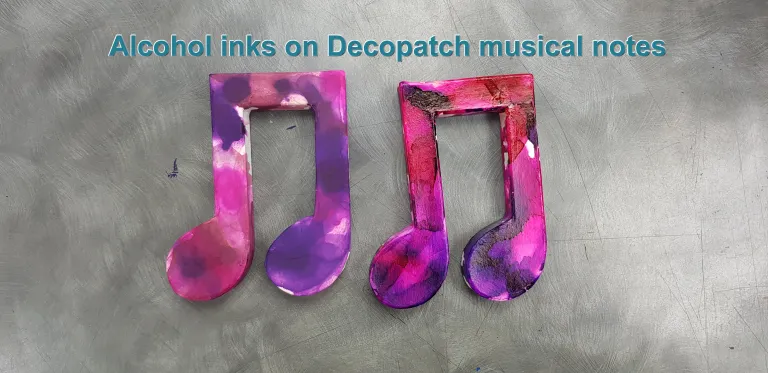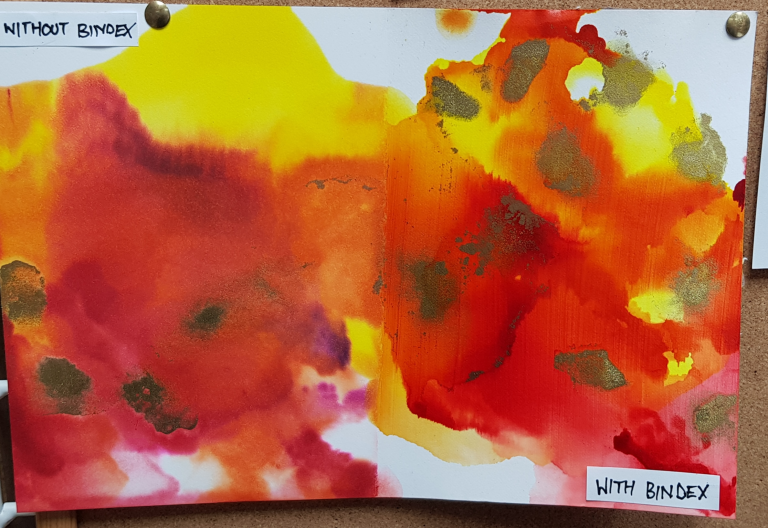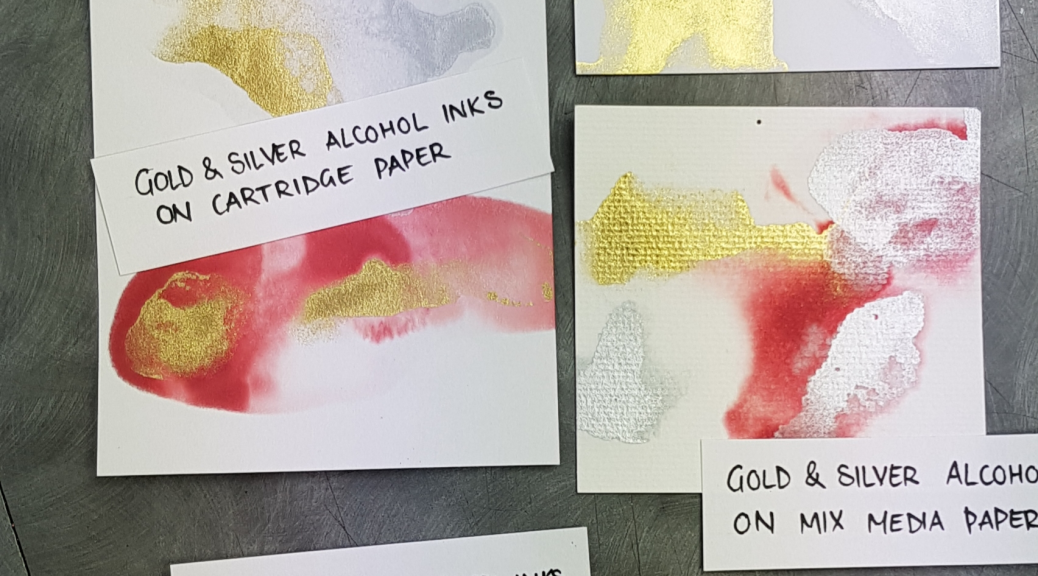In store we decided to test Piñata Alcohol Inks on different papers and surfaces. We tested on Yupo Paper, Bristol Board, Cartridge Paper and Mix Media Paper initially.
The Yupo Paper is ideal, because the surface itself is less porous, so the inks sit on the surface as opposed to soaking in slightly which causes the colours to lose their vibrancy. This means we can come back at a later point and rework the piece just by adding more ink and/or alcohol, because the colours sit on the surface of the paper. You can rework your piece as much as you like until you’re happy. The overall look of the piece when using Yupo Paper has a shiny finish; if you wanted a softer effect then the other papers we tried may be a good option for you.
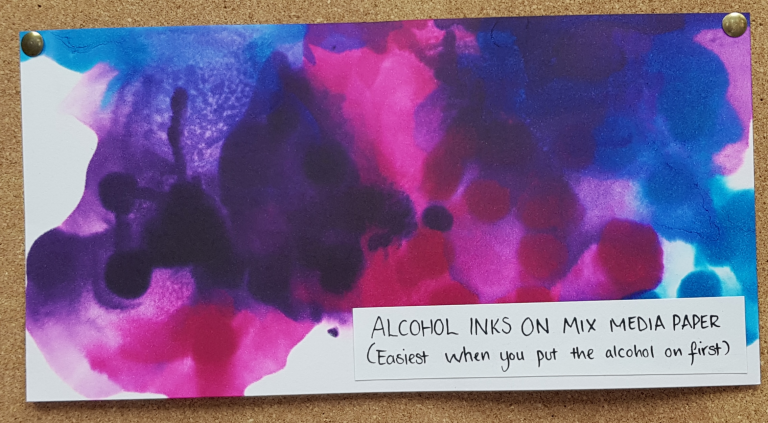
We didn’t find much difference between the Bristol Board, Cartridge Paper and Mix Media Paper, the only main difference was that with the Bristol Board the inks don’t soak in quite as quickly so you have a bit more time to work with the inks; with all three of these papers though you do need to move faster than with the Yupo Paper, only because of their absorbency. The one thing I would say is bear in mind if you add the alcohol on first then add drops of ink to the puddle of alcohol, it moves around a lot smoother. Whereas, if you drop the ink on first you can be left with the spot shape you get not dispersing fully, so if you wanted a smoother appearance it’s best to do the alcohol first.
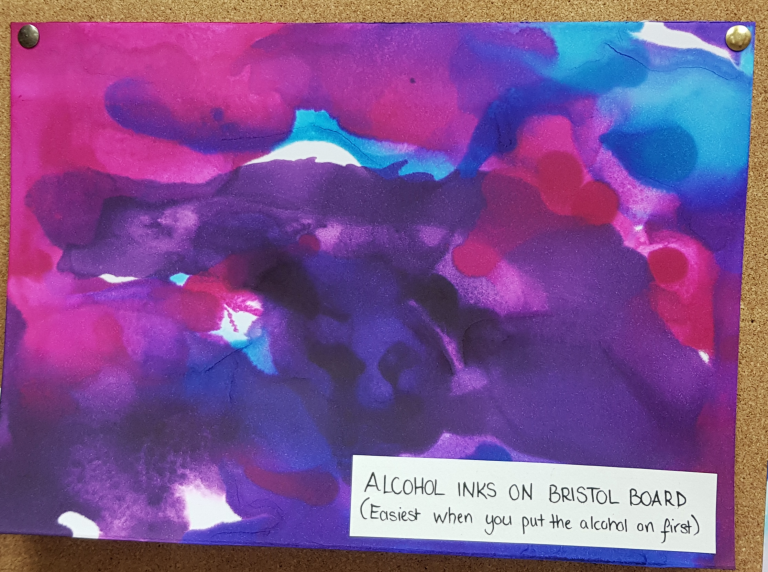
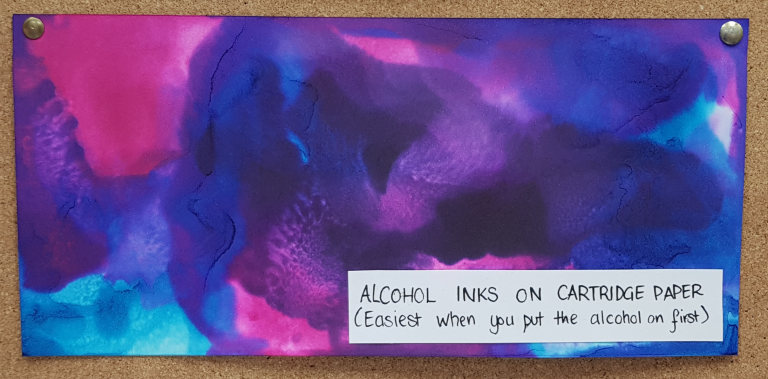

We tried out using the metallic alcohol inks as well (silver and gold) because they can react differently. We found it worked best on the Yupo Pad which is what we expected, but on the other papers it sat more on top and didn’t move in the same way the other colours did before. Bearing in mind, on the Cartridge Paper you can see an outline of the rubbing alcohol that was used where the paper has been discoloured.
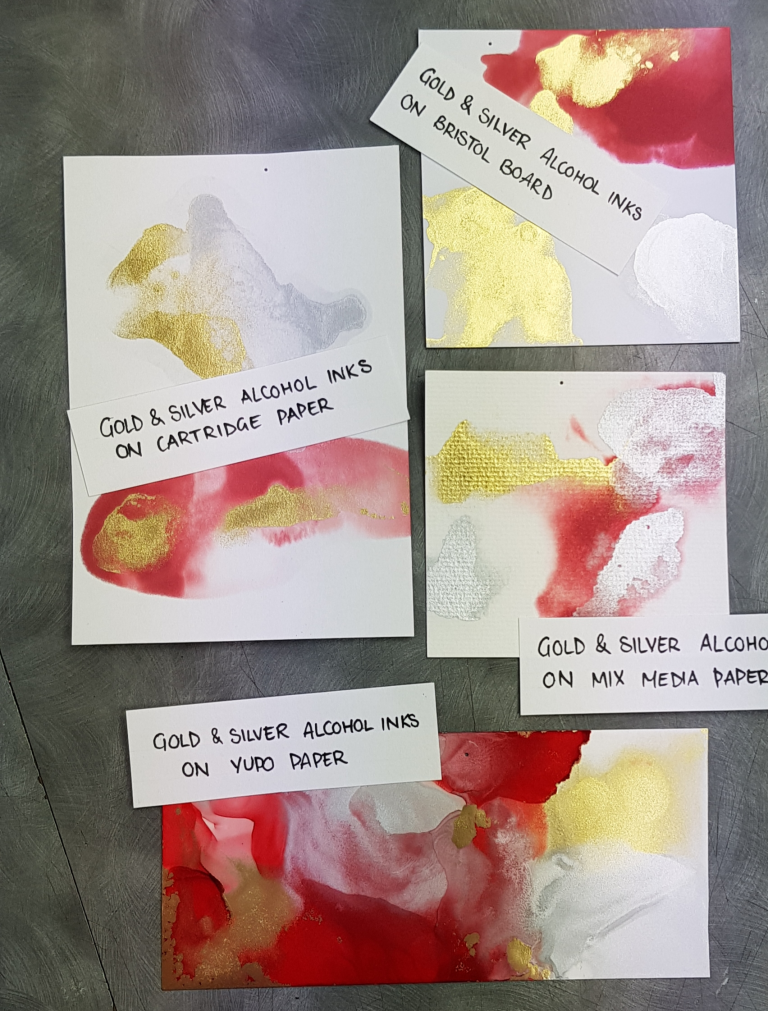
You do not only need to use these four papers however, any non-porous surface will work fine. We have tried Primed Smooth Artist Panels as well as ceramics such as plates and mugs, glasses, just a few of the many options you have to choose from. However, your choices expand when you introduce Bindex. Bindex is traditionally used to water down paints and create collages, but we tried painting it onto certain surfaces to see if the alcohol inks would react better. We tried this on several things including a Decopatch musical note shape, and the difference is very clear. The alcohol inks behaved in a similar way to how they do on the Yupo Paper.
